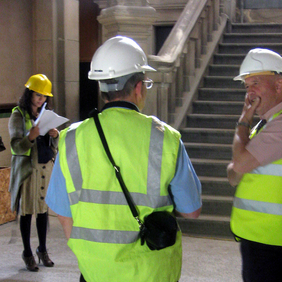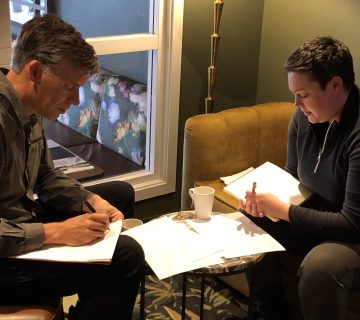On 23 November, the Architects’ Council of Europe (ACE) organised in Leeuwarden a conference on the Adaptive Re-Use and Transition of the Built Heritage. This event took place in the framework of the EYCH and related in particular to Initiative 4 on ‘Heritage in Transition’.
ACE organised a panel discussion in order to take stock of the lessons learned over the EYCH on the ‘adaptive re-use’ theme. On this occasion, a declaration entitled Preserving and Enhancing the Values of our Built Heritage for Future Generations was presented. It recalls the multiple benefits of re-using the built heritage and highlights some good practices in terms of processes and design approach.
The showcased re-use projects went from singular buildings (e.g. churches) and small-scale compounds (e.g. farmsteads) to large-scale office buildings and entire housing quarters. The necessity of re-use and the types of presented projects revealed that both professional organisations and the architecture curricula have to deal with and improve the image of the ‘architecture of the ordinary’.
The presentations also addressed theoretical concepts and specific issues which define the frame of the paradigm shift in values and policies towards the adaptive re-use. Although the concept of conservation and adaptation of existing structures is as old as building in less perishable materials, the Zeitgeist of modernism lead to the vision of the city of the future as an opposite urban landscape to historical urban areas. Among others, due to social and economic reasons, the results of such concepts turn up to be unsustainable while reality doesn’t live up to the visions. In this context the presentations made clear that adaptive re-use has to be taken into consideration on an urban level in order to achieve social and economic viability. The involvement of the local community, e.g. through participatory design, is of imperative importance in order to find a suitable and accepted use for existing structures.
Conservation is commonly acknowledged as a task that can be addressed only by involving different disciplines. Adaptive re-use goes beneath conservation and links historical buildings to the needs of contemporary users. Since adaptive re-use can and should lead to social cohesion and engagement of the local community with their built heritage, it is worth further discussion how heritage interpretation can become part of the process.
The videos of the presentations are available on the conference website:
https://www.ace-cae.eu/activities/events/2018/built-heritage-conference/
Claudiu Silvestru is IE’s Architects Coordinator. He can be contacted at: claudiu.silvestru@interpret-europe.net.
To cite this article:
Silvestru, Claudiu (2018) ‘Adaptive re-use and transition of built heritage’. In Interpret Europe Newsletter 4-2018, 32.
Available online:
www.interpret-europe.net/fileadmin/Documents/publications/Newsletters/ie-newsletter_2018-4_winter.pdf




